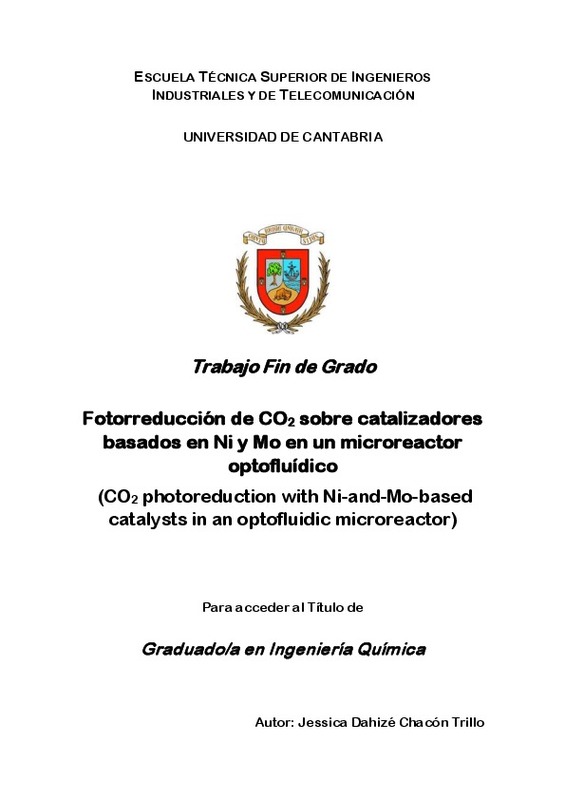- RiuNet repositorio UPV
- :
- Docencia
- :
- Trabajos académicos
- :
- ETSII - Trabajos académicos
- :
- Ver ítem
JavaScript is disabled for your browser. Some features of this site may not work without it.
Buscar en RiuNet
Listar
Mi cuenta
Estadísticas
Ayuda RiuNet
Admin. UPV
Desde el lunes 3 y hasta el jueves 20 de marzo, RiuNet funcionará en modo de solo lectura a causa de su actualización a una nueva versión.
Fotorreducción de CO2 sobre catalizadores basados en Ni y Mo en un microreactor optofluídico
Mostrar el registro completo del ítem
Chacon Trillo, JD. (2019). Fotorreducción de CO2 sobre catalizadores basados en Ni y Mo en un microreactor optofluídico. http://hdl.handle.net/10251/139595
Por favor, use este identificador para citar o enlazar este ítem: http://hdl.handle.net/10251/139595
Ficheros en el ítem
Metadatos del ítem
| Título: | Fotorreducción de CO2 sobre catalizadores basados en Ni y Mo en un microreactor optofluídico | |||
| Autor: | Chacon Trillo, Jessica Dahize | |||
| Director(es): | ||||
| Entidad UPV: |
|
|||
| Fecha acto/lectura: |
|
|||
| Resumen: |
[ES] La necesidad de obtener energía genera un incremento constante de la concentración
de CO2 en la atmosfera procedente principalmente de la quema de combustibles fósiles,
alcanzando valores de 415 ppm en mayo del 2019. ...[+]
[EN] The need of obtaining energy generates a constant increase in the concentration of CO2
in the atmosphere mainly from the burning of fossil fuels, reaching values of 415 ppm in
May 2019. With the objective of reducing ...[+]
|
|||
| Palabras clave: |
|
|||
| Derechos de uso: | Reconocimiento - No comercial (by-nc) | |||
| Editorial: |
|
|||
| Titulación: |
|
|||
| Tipo: |
|
recommendations
Este ítem aparece en la(s) siguiente(s) colección(ones)
-
ETSII - Trabajos académicos [10539]
Escuela Técnica Superior de Ingenieros Industriales







